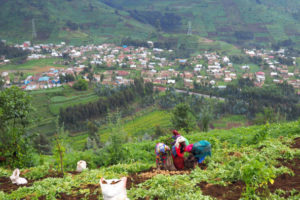Throughout history, there have been many different economic systems, some characterizing the era in which they happened, but others remaining in many different eras. The economic systems that have managed to maintain themselves for centuries, not being slaves of their time, have changed, but their base has always been the same. To understand one of the most important economic systems in history, today in this article, we are going to talk about the meaning and characteristics of the subsistence economy.
What is the subsistence economy?
The subsistence economy is the economic system that characterized societies before the industrial revolution, although it also characterizes certain societies, both historical and current, whose production technology is not fully developed.
This system refers to agriculture, livestock and fishing, that is, to the activities that we relate to the primary sector, tasks that were of greater importance during the Middle Ages and Modern Ages, times when the subsistence economy was more characteristic. The system is based on production in order to survive, not looking for the surplus to sell, producing only for their own consumption.
This economic system brought serious problems in societies since in times of drought or poor harvests, populations lost their only livelihood, causing a strong demographic shock, increased mortality and decreased birth rates. The move to other economic systems changed this, since by generating a surplus you could get money or other goods, and with this, you can have a kind of “cushion” in case you have a bad harvest the following year.
The subsistence economy is undoubtedly one of the most important economic systems in history, thanks to, among other things, its long duration over time. It is considered one of the three great economic systems in history, along with capitalism and slavery. Its influence is such that even after the industrial revolution, there are societies that base their economy on this economic system.
Characteristics of the subsistence economy

To continue with this lesson on the meaning and characteristics of the subsistence economy, we must talk about the characteristics that define this economic system and differentiate it from others.
First of all, we must understand that the subsistence economy is based on a mechanism of immediate consumption by the family or community. Subsistence is sought at the moment, without worrying about the future, the important thing is to be able to eat in the present. Production is not usually accumulated, due in part to the fact that the quantity of products that are obtained through this system is minimal.
Another characteristic is that the subsistence economy is highly related to the activities of the primary sector, being jobs much more related to immediate consumption than those of the secondary and tertiary sector. Some of these activities are fishing, livestock or primary agriculture. Coupled with this is the characteristic of traditional work, since all these activities are carried out in a very traditional way, with hardly any technology that would help increase production.
Families in this economic system become units of production, with a division of labor within the family itself, depending on the ages and sex of the members.
The main problem with this system is when a subsistence crisis occurs, that is, a period of food shortage, which can have dire consequences for society. These subsistence crises have provoked throughout history numerous subsistence riots, that is to say, periods in which a large popular mass asked for food due to food shortages. Some famous subsistence riots are the Mutiny of the Cats and the Mutiny of Esquilache.
Societies based on the subsistence economy
Both in the past and the present, this type of economic system can be seen, although the reality is that after the industrial revolution, most societies preferred to move to another type of system.
- The main society based on the subsistence economy is that of feudalism, of which we have already spoken in previous lessons. In summary, we could say that it was a system based on a relationship of vassalage between the feudal lords and the vassals. The vassals took care of the land in order to survive, and in return, they paid the feudal lord.
- Other subsistence-based societies are the ethnic communities of Africa, small communities that base their lives on their own consumption. Unfortunately, the advance of the Western world means that fewer of these ethnic communities exist.
We can also mention other societies from the Middle and Modern Ages, but not from Europe. Great examples are the American communities before European colonization or the Asian territories that base their economy on agriculture.




